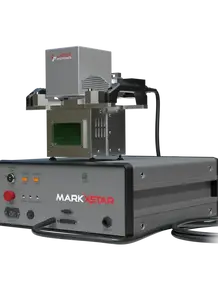What Is Laser Cutting?
Unmatched Precision in Machining
Laser cutting, whether using fiber or CO2 lasers, utilizes the thermal effect of infrared light to cut through materials with exceptional accuracy. The laser beam is focused to a fine point, creating narrow cuts with incredibly clean edges. This non-contact, fully automatable technology offers fast, consistent results, making it ideal for machining complex geometries with precision.

Our Laser Cutting Solutions
Your Ultimate Choice for Speed and Precision in Cutting

How Fiber & Laser Cutting
Fiber Laser Cutting
Minimize Heat Impact in Metal Processing
Types of Systems:
-
SaberTech Titan
-
SaberTech Titan Express
-
Cobra Robot
CO2 Laser Cutting
Industrial-Grade Cutting for Plastics & Organic Materials
-
SBM3
-
SBM1200
-
SBM2800
-
PLASDEX
Types of Laser Cleaning Systems
CleanTech! Lasers remove dirt. Experience it!
Laser Cutting vs. Other Methods
Explore how fiber laser cutting excels in precision, maintenance, and consumable efficiency when compared to other cutting techniques.
Mechanical Cutting vs. Laser Cutting
Mechanical cutting involves methods like sawing, shearing, and milling, which often have a higher margin for error. In contrast, laser cutting is a contactless, CNC-controlled process that offers far greater precision, resulting in clean edges. Laser cutting also reduces material waste, minimizes rework, and eliminates the need for post-process surface finishing, making it a more efficient choice.
Waterjet Cutting vs. Laser Cutting
Both waterjet and laser cutting require significant initial investment, but waterjet cutting comes with higher ongoing operational and maintenance costs. This includes the need for abrasives, upkeep of the high-pressure system, addressing leaks or wear, and post-process cleaning. In comparison, laser cutting requires less maintenance and fewer consumables, making it more cost-effective over time.
Plasma Cutting vs. Laser Cutting
Laser cutting creates a smaller heat-affected zone, leading to less material distortion and damage compared to plasma cutting. While plasma cutting is considered an affordable option, it lacks the precision of a laser beam and may not be suitable for cutting thin or intricate materials. Laser cutting is more versatile and safer for a wider range of applications and materials. Additionally, plasma cutters require regular replacement of consumables and frequent gas replenishment, adding to their operational costs.













